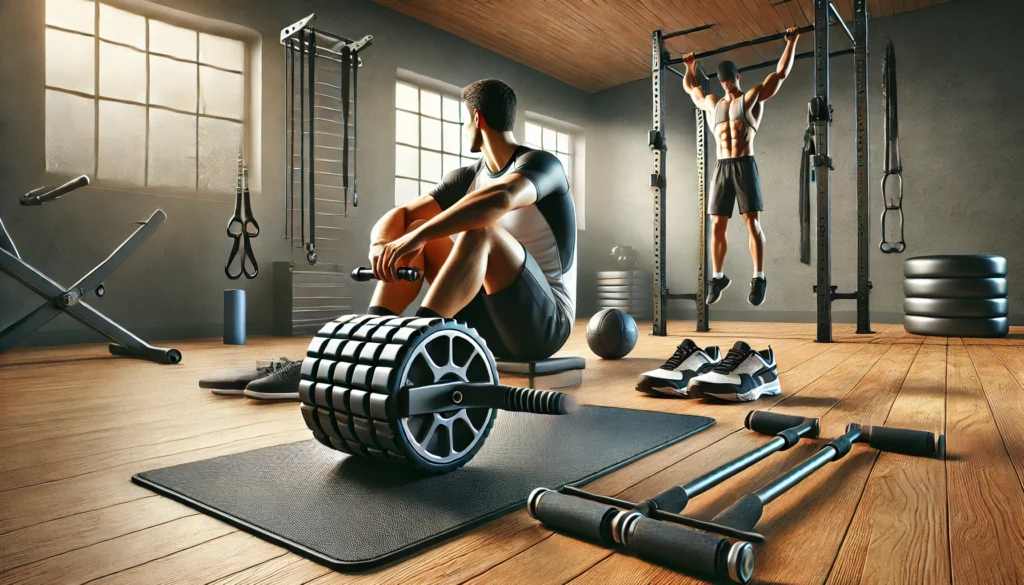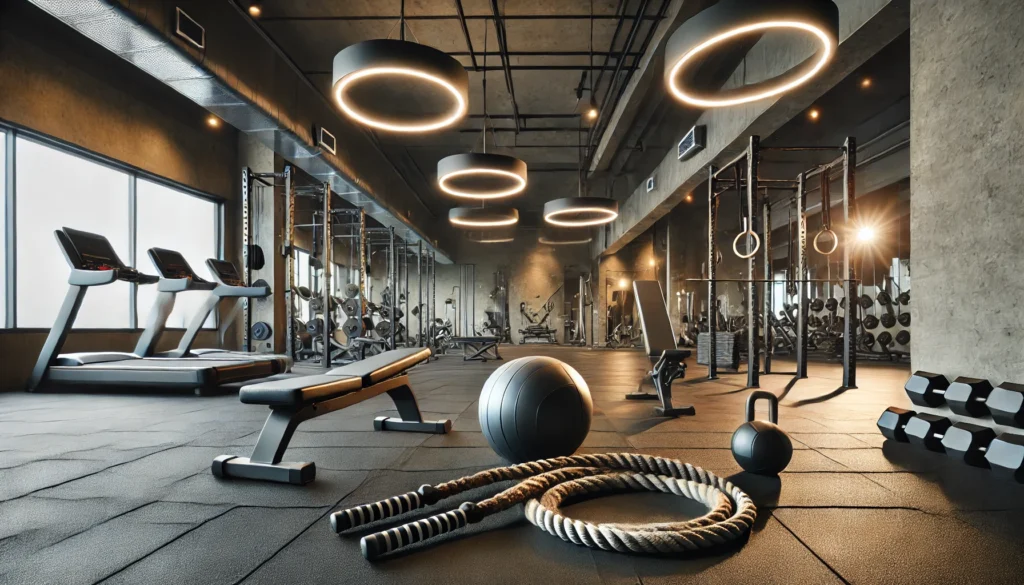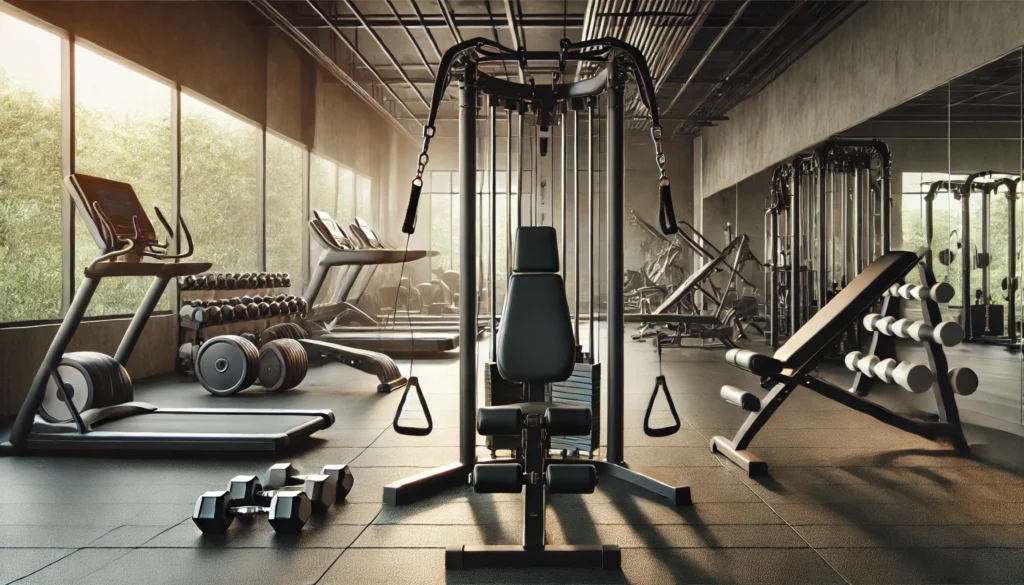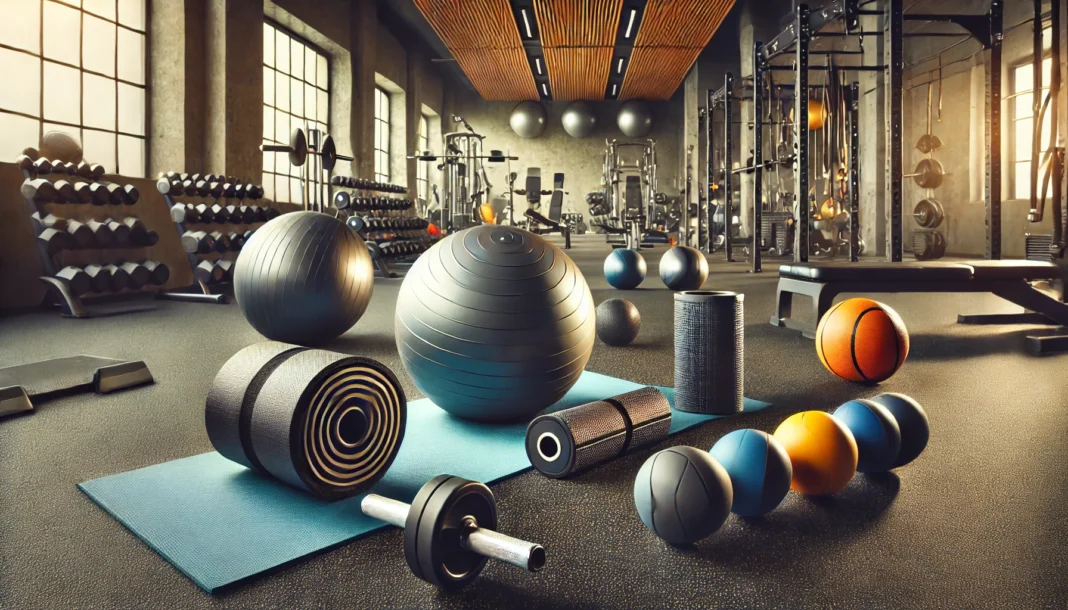Introduction: The Importance of Core Strength and the Right Equipment
Core strength is the foundation of overall fitness, impacting balance, posture, and athletic performance. A strong core enhances daily movements, prevents injuries, and contributes to better performance in sports and weightlifting. The right gym equipment for core training can elevate your workout routine by targeting deep core muscles that bodyweight exercises alone may not fully engage. Investing in high-quality core exercise equipment ensures that your training is effective, progressive, and tailored to your specific fitness goals. This guide explores the most effective gym equipment for core training, how to use it properly, and how to incorporate it into a well-rounded fitness regimen.
You may also like: The Ultimate Bodyweight Workout Routine for Full-Body Strength and Performance
Why Core Strength Matters for Overall Fitness
Core muscles do more than just contribute to an aesthetic six-pack—they are essential for stability, mobility, and functional movement. The core encompasses the rectus abdominis, obliques, transverse abdominis, and lower back muscles, all of which work together to support spinal alignment and efficient movement patterns. Strong core muscles improve athletic performance by enhancing power transfer between the upper and lower body, making activities such as running, lifting, and jumping more efficient. Additionally, core training reduces the risk of lower back pain and postural imbalances, two common issues in both active individuals and those with sedentary lifestyles. Using core exercise equipment effectively allows for greater resistance, varied movement patterns, and progressive overload, leading to continuous strength gains and enhanced muscular endurance.
Essential Gym Equipment for Core Strength
Stability Balls: Enhancing Balance and Core Activation
Stability balls are an excellent tool for core training, challenging balance and proprioception while engaging deep stabilizing muscles. Unlike static floor exercises, stability ball movements require continuous engagement of the core to maintain control. Exercises such as stability ball rollouts, plank variations, and seated Russian twists amplify core muscle activation while reducing stress on the spine. Stability balls also improve coordination, making them ideal for functional training and rehabilitation programs. Integrating a stability ball into your gym equipment for core training enhances workout variety and intensifies core engagement through instability.
Medicine Balls: Adding Resistance and Dynamic Movements
Medicine balls are versatile pieces of core exercise equipment that allow for explosive movements and rotational exercises. Their weighted nature increases resistance, making them ideal for building core strength through movements such as rotational slams, overhead throws, and side twists. Unlike traditional weight machines, medicine balls encourage natural movement patterns that translate to sports performance and everyday functional activities. Incorporating medicine balls into high-intensity core workouts enhances power development and muscular endurance. Additionally, partner-based medicine ball drills provide an interactive and dynamic approach to core conditioning.

Ab Rollers: Targeting Deep Core Muscles
Ab rollers are among the most effective gym equipment for core development, requiring significant control and stability. Unlike traditional crunches, ab rollouts engage the entire core, including the transverse abdominis and obliques, while also activating secondary stabilizers in the shoulders and arms. Proper technique is essential when using an ab roller, as incorrect form can place excessive strain on the lower back. For beginners, starting with controlled partial rollouts and gradually increasing range of motion ensures safe progression. Ab rollers provide an advanced challenge for individuals seeking to build core endurance and strength with minimal equipment.
Cable Machines: Resistance-Based Core Training
Cable machines offer a wide range of core-focused exercises, allowing for controlled resistance and progressive overload. Unlike free weights, cable machines provide constant tension throughout movements, maximizing muscle engagement. Core exercises such as cable woodchoppers, Pallof presses, and rotational pulls enhance rotational strength and anti-rotational stability. The adjustability of cable machines enables users to modify resistance levels to match their fitness level, making them a staple in any core training regimen. Additionally, incorporating unilateral movements with cable machines improves balance and coordination, reducing the risk of muscular imbalances.
Suspension Trainers: Bodyweight Core Mastery
Suspension trainers, such as TRX systems, provide an effective way to train the core using bodyweight resistance. The instability created by suspension exercises forces deep core activation, improving strength and stability. Exercises such as TRX planks, knee tucks, and pikes engage multiple core muscles while challenging balance and endurance. Suspension trainers also allow for scalable difficulty, making them suitable for both beginners and advanced athletes. Including suspension training in a core-focused routine enhances functional strength and adaptability, improving performance across various fitness disciplines.
Structuring a Core Workout Using Gym Equipment
A well-structured core training program incorporates a variety of core exercise equipment to target different muscle groups and movement patterns. Combining stability-based exercises, resistance training, and dynamic movements ensures a balanced approach to core development. Workouts should include a mix of anti-rotational movements (Pallof presses), rotational exercises (medicine ball slams), and endurance-based holds (planks and suspension trainer exercises). Progressive overload should be applied by increasing resistance, duration, or exercise complexity over time. A comprehensive approach to core training not only enhances aesthetics but also builds functional strength that improves overall athletic performance and injury prevention.
Preventing Common Core Training Mistakes
While using gym equipment for core training can be highly effective, common mistakes can hinder progress or lead to injury. Over-reliance on momentum rather than controlled movements reduces the effectiveness of core exercises, limiting muscle engagement. Poor posture, particularly excessive arching of the lower back during ab roller exercises, can place unnecessary strain on the spine. Neglecting core endurance training, such as prolonged planks or static holds, results in muscular imbalances and reduced stability. Incorporating a variety of core exercise equipment and focusing on proper form ensures that workouts remain effective and safe. Taking the time to master technique before increasing intensity minimizes the risk of injury and maximizes core strength gains.

Frequently Asked Questions (FAQ) on Core Exercise Equipment
1. What are the most effective types of gym equipment for core training? There are several types of gym equipment for core training that effectively engage the abdominal muscles, obliques, and lower back. Stability balls challenge core balance, forcing muscles to work harder to maintain control. Medicine balls add resistance to rotational movements, helping to improve power and coordination. Cable machines offer variable resistance that can be adjusted for anti-rotational and rotational exercises, essential for core stability. Additionally, suspension trainers like TRX systems enhance core strength by leveraging body weight against gravity, creating constant muscle engagement.
2. How can core exercise equipment improve athletic performance? Core exercise equipment enhances athletic performance by increasing stability, power transfer, and endurance. Athletes benefit from a stronger core as it improves coordination between the upper and lower body, allowing for more efficient movement patterns. Gym equipment for core training can target different muscle groups through functional movements, reducing injury risks in high-impact sports. Additionally, weighted exercises with medicine balls or resistance bands simulate real-life athletic movements, enhancing speed and agility. A well-developed core also helps in generating explosive power, which is critical in sprinting, jumping, and contact sports.
3. What is the best way to incorporate gym equipment for core workouts into a fitness routine? Incorporating gym equipment for core training should be done strategically to prevent overtraining and ensure balanced development. A good approach is to include core exercises at the beginning or end of a workout session, depending on the intensity of the rest of the training. Rotational exercises using cable machines or medicine balls can be integrated into strength workouts to enhance coordination and functional strength. Stability-based exercises, like balance ball planks, should be performed on recovery days to reinforce endurance without excessive strain. Alternating between weighted and bodyweight core exercises ensures comprehensive muscle engagement while avoiding adaptation plateaus.
4. Are machines or free weights better for core training? Both machines and free weights offer benefits for core training, but their effectiveness depends on the training goal. Machines, such as cable systems and abdominal crunch stations, provide controlled resistance and structured movement patterns, making them ideal for isolating core muscles. On the other hand, free weights like kettlebells and medicine balls engage stabilizing muscles and promote functional strength by mimicking real-world movements. Core exercise equipment that allows for dynamic and rotational movement, such as resistance bands or stability balls, is beneficial for improving agility and coordination. A balanced routine that includes both machines and free weights optimizes strength, stability, and endurance.
5. Can gym equipment for core training help reduce lower back pain? Yes, properly used core exercise equipment can strengthen deep abdominal muscles and spinal stabilizers, alleviating lower back pain. Weak core muscles often contribute to poor posture, which increases stress on the lumbar spine. Using gym equipment for core exercises like Pallof presses with a cable machine or stability ball rollouts improves spinal alignment and reduces excessive strain. Suspension trainers also aid in reinforcing proper movement mechanics by forcing the core to engage throughout each exercise. However, individuals with chronic back pain should consult a healthcare professional before starting a core-focused workout routine.
6. What are some advanced core exercises using gym equipment? Advanced core training requires movements that challenge stability, resistance, and endurance simultaneously. One of the best exercises is the ab rollout using an ab wheel or barbell, which engages the entire core, including deep stabilizing muscles. Cable woodchoppers allow for progressive resistance in rotational core training, strengthening the obliques and improving functional movement. Hanging leg raises performed on a pull-up bar build lower abdominal strength while enhancing grip endurance. TRX pikes and atomic push-ups with suspension trainers introduce instability, forcing the core to work harder to maintain control. Medicine ball slams provide a combination of power and core engagement, making them ideal for high-intensity training.
7. What are the biggest mistakes people make when using core exercise equipment? One of the biggest mistakes when using core exercise equipment is relying too much on momentum rather than controlled movement. Swinging weights or rushing through exercises reduces muscle engagement and increases the risk of injury. Another common issue is poor posture, especially during weighted exercises, leading to excessive strain on the lower back. Failing to engage the core properly during exercises such as rollouts or medicine ball throws limits the effectiveness of the movement. Additionally, neglecting anti-rotational exercises, such as Pallof presses, can lead to muscular imbalances and poor spinal stability. Proper form, controlled execution, and progressive overload ensure long-term benefits from core-focused workouts.
8. How does suspension training compare to traditional core exercise equipment? Suspension training differs from traditional core exercise equipment by incorporating bodyweight resistance and instability into every movement. Unlike static machines that guide the range of motion, suspension trainers require active engagement of stabilizing muscles, leading to greater core activation. TRX exercises such as suspended planks and pikes offer a higher degree of difficulty due to the constant need for balance and control. Traditional core exercise equipment, such as ab rollers or medicine balls, focuses more on resistance-based movements that target specific muscle groups. Using a combination of both approaches ensures well-rounded core strength and functional fitness development.
9. Can gym equipment for core training be used for weight loss? Yes, core exercise equipment can play a significant role in weight loss when incorporated into high-intensity interval training (HIIT) or metabolic conditioning workouts. Exercises that combine core engagement with full-body movement, such as medicine ball slams or battle ropes, increase calorie expenditure while building strength. Stability ball exercises that incorporate dynamic movements, such as rollouts and V-ups, activate multiple muscle groups, leading to greater energy burn. Resistance-based core training, such as cable woodchoppers, enhances metabolic rate by promoting muscle growth, which contributes to long-term fat loss. Pairing core-focused exercises with cardiovascular conditioning maximizes weight loss while preserving lean muscle mass.
10. What core exercise equipment is best for home workouts? For home workouts, compact and versatile core exercise equipment is ideal for maximizing space efficiency while maintaining effectiveness. Resistance bands provide an excellent alternative to cable machines for anti-rotational and stability exercises. Ab wheels are a cost-effective option for targeting deep core muscles while requiring minimal space. Suspension trainers, such as TRX systems, offer full-body engagement and adjustable difficulty levels, making them ideal for at-home core training. Stability balls add variety and challenge to exercises like rollouts and planks, ensuring continuous progression. Investing in portable gym equipment for core training allows individuals to maintain a consistent fitness routine without requiring a commercial gym setup.

Conclusion: Elevating Core Strength with the Right Equipment
Incorporating gym equipment for core training into a workout regimen enhances strength, endurance, and functional fitness. Stability balls, medicine balls, ab rollers, cable machines, and suspension trainers all offer unique benefits that contribute to a well-rounded core training program. Understanding how to use core exercise equipment effectively ensures continuous progress while minimizing injury risks. A strong core translates to better posture, improved athletic performance, and reduced risk of lower back pain, making core training an essential component of any fitness routine. By selecting the right tools and applying proper training principles, individuals can achieve a stronger, more resilient midsection that supports long-term health and fitness goals.
core strength training, functional fitness, stability ball exercises, medicine ball workouts, ab roller training, cable machine core exercises, suspension trainer workouts, anti-rotational core training, progressive overload, injury prevention, muscle endurance, core engagement, fitness equipment selection, gym workout routines, strength and conditioning, bodyweight core training, athletic performance, postural alignment, workout progression, core stability enhancement.
Further Reading:
Train Your Trunk With The Best Core Exercise Equipment in 2025
Best Gym Equipment for Core Strength: Essential Gear for a Stronger Midsection
The Best Core Exercise Equipment 2025 For Core Muscle
Important Note: The content provided by HealthXWire is for informational purposes only and should not be construed as medical advice, diagnosis, or treatment. While we strive for accuracy, the information presented on this site may not reflect the most current research or medical guidelines. Always seek the advice of your physician or other qualified health provider with any questions you may have regarding a medical condition. HealthXWire does not endorse, recommend, or guarantee the efficacy of any products, services, or treatments mentioned on this site. Users should not disregard professional medical advice or delay seeking it because of something they have read on HealthXWire. HealthXWire is not liable for any damages, loss, or injury arising from reliance on the information provided herein.



